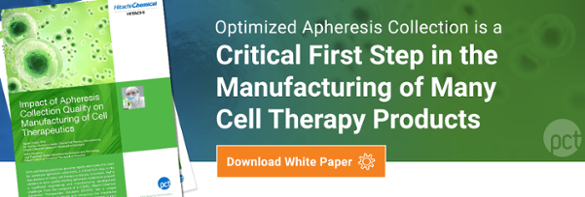One of the most critical first steps in the development of many cell therapies is having optimized apheresis collections. Starting with variable or low-quality apheresis presents a significant challenge to the manufacturing of these innovative products.
As cell therapy products move from preclinical studies towards commercialization, the developers’ focus changes. In the beginning, most of the focus is on clinical safety and efficacy rather than robustness and consistency of manufacturing. And because there is often a small number of patients in early phases, variability and lack of consistency are more easily managed, or may not even be evident. However, once the process needs to transition to commercialization, the number of patients as well as the number of collection sites increase, as does the need to focus on the robustness of the supply chain, cost of goods and reimbursement.

This is why it’s key for cell therapy developers to not only consider robustness and consistency of manufacturing at the beginning of their process development steps, but also utilize good starting materials.
Any starting materials that show increased variability or decreased quality will lead to increased complexity in the downstream manufacturing unit operations. When this occurs, the process is often difficult to standardize and control in a cGMP environment. Less controlled, less consistent apheresis input creates a greater engineering challenge for manufacturing development as well. Developers will need to devote resources to fixing the problem, and the timeline of clinical and development programs increases as well as additional challenges that could be avoided if at the very beginning the developer worked on better optimizing the starting apheresis material.
The optimal process needs to be capable of accommodating the expected range in variability in starting material without significant impact on quality attributes of the final product. A structured engineering approach based on fundamental understanding of starting material attributes and their effect on each step of the process can lead to innovative approaches. These methods might include automation coupled with real-time analytics, to absorb and dampen variability present in the starting material. An ideal outcome would be an optimized process that would actually lessen the requirements imposed on the starting material.
If not properly addressed, the use of the starting materials can create a ripple effect, resulting in a low quality manufacturing process, high costs and resource requirements, as well as a negative impact on clinical development, commercialization and patient access. As the cell therapy industry moves forward, developers will need to start looking at the entire process from the beginning; understanding where their process is now and where it needs to be tomorrow, remembering that the ultimate goal is to ensure these cutting-edge therapies are accessible to all patients who need them.
